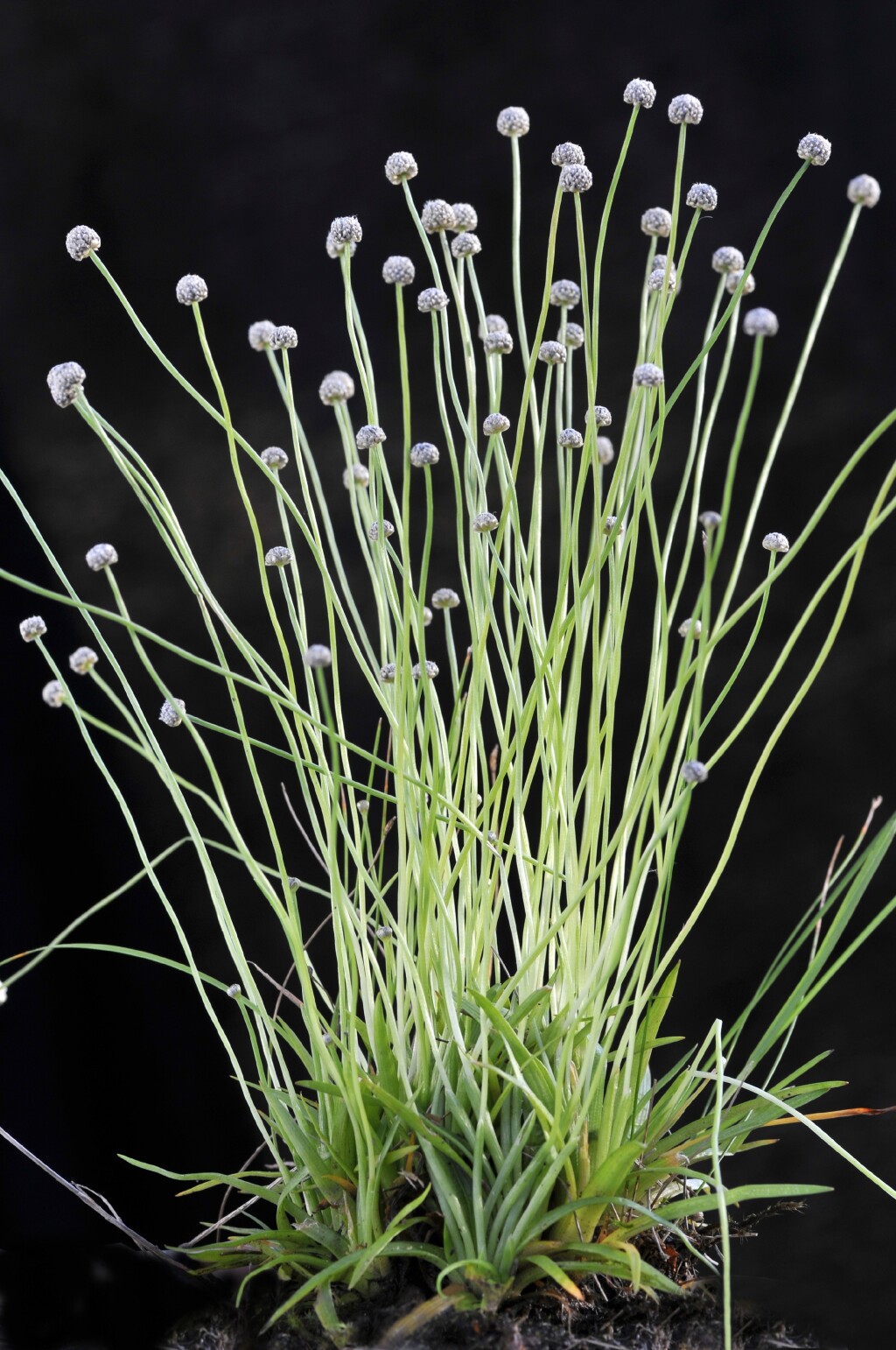Eriocaulaceae
Small annual (Victorian species) or perennial monoecious herbs. Roots fibrous. Stem usually short. Leaves alternate, sessile, usually forming a basal tuft (Victorian species); lamina linear-triangular to subulate, hence grass-like. Inflorescence a head-like cluster at the end of branches which are usually longer than the leaves, surrounded by 1 or more whorls of bracts. Flowers very small, actinomorphic or zygomorphic, bracteate, unisexual; perianth scarious or membranous, 4–6, in 2 whorls (inner whorl rarely absent), outer whorl darker and larger than inner whorl. Male flowers with stamens free, opposite perianth lobes, (1–)6; anthers 1- or 2-locular. Female flowers with ovary superior, 2- or 3-locular, 2- or 3-lobed distally; ovules 1 per locule; style single with 2 or 3 simple or bifid stigmatic branches. Fruit a loculicidal membranous capsule, opening by longitudinal slits; seeds 1 per locule, globular to ellipsoid.
10 genera with 700–1400 species (Leach 2017), with only Eriocaulon occurring in Victoria.
Conn, B.J. (1994). Eriocaulaceae. In: Walsh, N.G.; Entwisle, T.J., Flora of Victoria Vol. 2, Ferns and Allied Plants, Conifers and Monocotyledons, pp. 176–179. Inkata Press, Melbourne.
 Spinning
SpinningLeach, G.J. (2017). A revision of Australian Eriocaulon (Eriocaulaceae). Telopea 20: 205–259.


